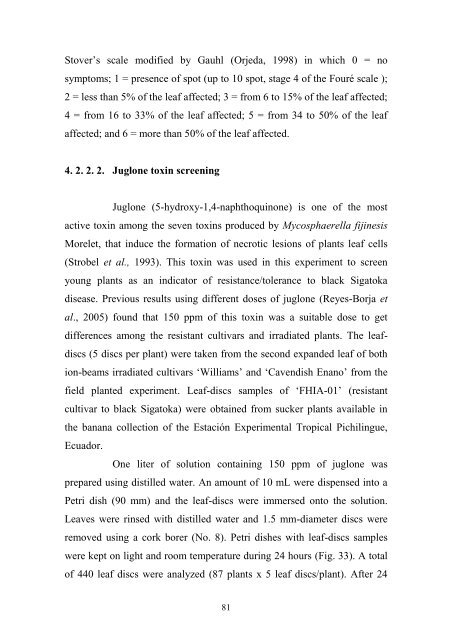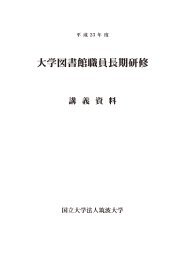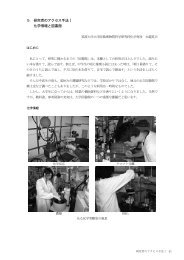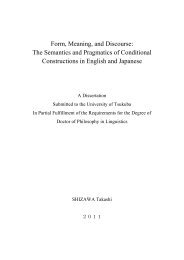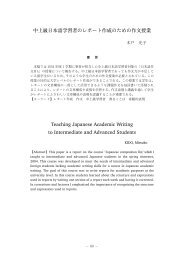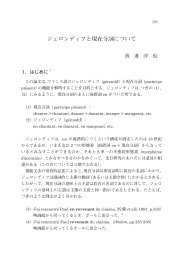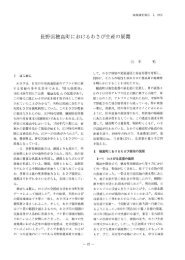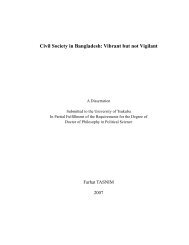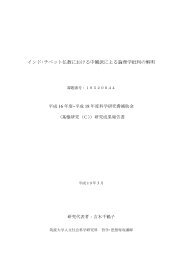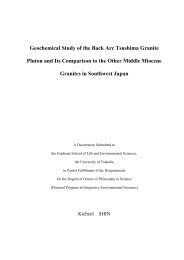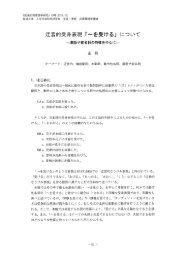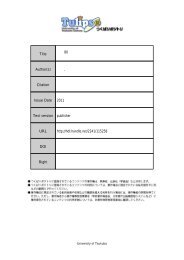Gamma Rays and CarbonIon-Beams Irradiation for Mutation ...
Gamma Rays and CarbonIon-Beams Irradiation for Mutation ...
Gamma Rays and CarbonIon-Beams Irradiation for Mutation ...
You also want an ePaper? Increase the reach of your titles
YUMPU automatically turns print PDFs into web optimized ePapers that Google loves.
Stover’s scale modified by Gauhl (Orjeda, 1998) in which 0 = no<br />
symptoms; 1 = presence of spot (up to 10 spot, stage 4 of the Fouré scale );<br />
2 = less than 5% of the leaf affected; 3 = from 6 to 15% of the leaf affected;<br />
4 = from 16 to 33% of the leaf affected; 5 = from 34 to 50% of the leaf<br />
affected; <strong>and</strong> 6 = more than 50% of the leaf affected.<br />
4. 2. 2. 2. Juglone toxin screening<br />
Juglone (5-hydroxy-1,4-naphthoquinone) is one of the most<br />
active toxin among the seven toxins produced by Mycosphaerella fijinesis<br />
Morelet, that induce the <strong>for</strong>mation of necrotic lesions of plants leaf cells<br />
(Strobel et al., 1993). This toxin was used in this experiment to screen<br />
young plants as an indicator of resistance/tolerance to black Sigatoka<br />
disease. Previous results using different doses of juglone (Reyes-Borja et<br />
al., 2005) found that 150 ppm of this toxin was a suitable dose to get<br />
differences among the resistant cultivars <strong>and</strong> irradiated plants. The leaf-<br />
discs (5 discs per plant) were taken from the second exp<strong>and</strong>ed leaf of both<br />
ion-beams irradiated cultivars ‘Williams’ <strong>and</strong> ‘Cavendish Enano’ from the<br />
field planted experiment. Leaf-discs samples of ‘FHIA-01’ (resistant<br />
cultivar to black Sigatoka) were obtained from sucker plants available in<br />
the banana collection of the Estación Experimental Tropical Pichilingue,<br />
Ecuador.<br />
One liter of solution containing 150 ppm of juglone was<br />
prepared using distilled water. An amount of 10 mL were dispensed into a<br />
Petri dish (90 mm) <strong>and</strong> the leaf-discs were immersed onto the solution.<br />
Leaves were rinsed with distilled water <strong>and</strong> 1.5 mm-diameter discs were<br />
removed using a cork borer (No. 8). Petri dishes with leaf-discs samples<br />
were kept on light <strong>and</strong> room temperature during 24 hours (Fig. 33). A total<br />
of 440 leaf discs were analyzed (87 plants x 5 leaf discs/plant). After 24<br />
81


